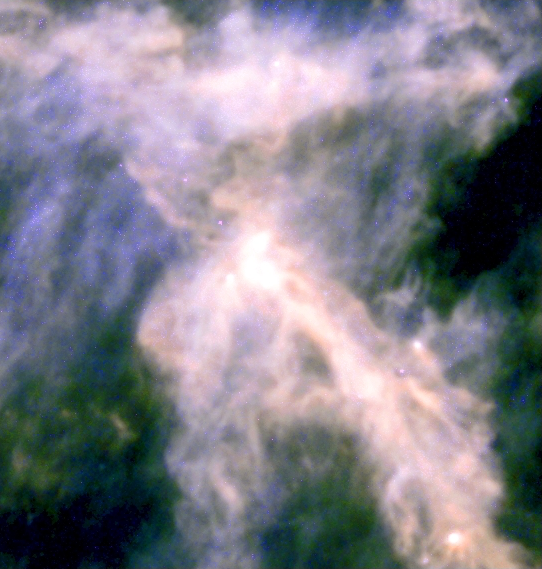
I investigate the physical conditions and evolution of giant star-forming regions, young forming stars, and planet-forming disks using observations from telescopes all over the world and in space. My research identified dust self-scattering as the most common mechanism for dust polarization in young disks and the types of disks it is most often found towards (Sadavoy et al. 2019). This result has significant implications for using dust polarization measurements to study magnetic fields or dust grain growth in disks. I also proposed that stars initially form in wide binary systems that later evolve (Sadavoy & Stahler 2017) and that turbulence dissipation in clouds correlate with their chemical evolution (Sadavoy et al. 2015).
More recently, I have become interested in the evolution of dust grains, from their production in space and from stellar remnants to their incorporation into star-forming regions and disks. See my Astro2020 white paper on this topic.
Research Highlights
Interstellar Dust in Star-Forming Regions
I explore dust grain properties and dust grain growth in star-forming regions. Dust grains are expected to be different in the cold dense interiors of clouds compared to their warmer, low-density peripheries, and these differences can affect how we infer mass, density, or magnetic fields. My research on dust seeks to measure theses changes in dust properties from observations to build better dust models and more accurate pictures of cores and disks.
e.g., Sadavoy et al. 2013, 2016, 2018a; Chen et al. 2016; Webb et al. 2017; Mason et al. 2020
The Role of Magnetic Fields in Star and Planet Formation
Magnetic fields affect how material is collected in clouds and funneled toward a young star and its disk. I am a member of several large, international collaborations to conduct more complete sampling of magnetic fields across clouds. My interest is to use these studies to connect the magnetic field properties to the star and disk properties on smaller scales and to the evolution of dust grains from multi-wavelength observations.
e.g., Sadavoy et al. 2018b, 2018c; Kwon et al. 2018; Soam et al. 2018; Coudé et al. 2019; Pattle et al. 2019
Polarized Dust Emission in Disks
Dust grains in disks around young stars are the building blocks for planets. Observations of dust polarization from scattered light in disks is a new and growing field that can also constrain disk properties and their dust grains. I led the largest survey of dust polarization toward disks to date and found that dust scattering is the most common polarization mechanism. Follow-up studies using higher resolution data and multiple wavelengths are planned.
e.g., Sadavoy et al. 2018b, 2019; Harris et al. 2018; Gulick et al. in preparation
Cloud Structure and Fragmentation
Star-forming clouds are highly structured objects, and stars only form within small dense condensations within them. I seek to connect how large clouds fragment to form these dense condensation and how the properties of the dense condensation affect the stars and disk they produce. In particular, I am investigating how the dense condensations themselves fragment to form multiple systems.
e.g., Sadavoy et al. 2012, 2014, 2015; Sadavoy & Stahler 2017; Tobin et al. 2016; Kirk et al. 2017; Mercimek et al. 2017; Pokhrel et al. 2018
Interested in joining our research group?
Information for prospective undergraduate students Information for prospective graduate students
 The Physics Department
The Physics Department